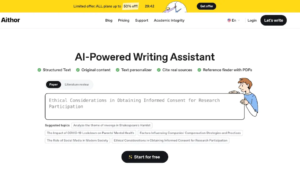If you are going to publish your work in the future, it’s important to cite your sources. Citations are standardized in the academic world by several bodies. Since most publication venues are strict when it comes to formatting, aspiring researchers and graduate students need to know the process and benefits of citing a research paper. Citing your sources is beneficial for several reasons. The most important one is that you can show your readers and reviewers how relevant your work is. However, citing a research paper can be tiresome and time-consuming. In this post, we are going to discuss everything about citation in the education sector and how you can use it in your research paper.
The purpose of citations
One of the key reasons for citing resources in a research paper is to avoid dishonesty. Presenting other peoples’ ideas without recognizing them goes against the set scientific rules. It’s not only ethical but also decent. Human beings enjoy owning things. They love their physical properties and intellectual achievements. They want to know where your information came from and how you developed your ideas. Referencing your sources is an important practice as it allows the right people to be recognized for their ideas. You need to cite sources in your research paper to:
- Avoid plagiarism: Citations allow researchers to quote other people and acknowledge them for their intellectual contributions.
- Respect people’s properties: As you research extensively, you’ll come across information that has been legally protected. They might have property rights such as industrial designs, patents, and trademarks. Creative works in the entertainment industry should also be included in your references if you choose to use them.
- Provide evidence: Citing data in the right manner enables you to provide evidence for the main points of your work. This is important when you are making a case for a particular position.
- Enable reviewers to access source documents: Citations allow reviewers to check and verify data and arguments presented. It also directs readers to the sources where they can find more information about the subject.
In general, referencing allows research communities to place their work in the right context for readers to see its potential. There are a lot of disciplines and fields in the world of research. And each has a unique standard and style for proper referencing. Also, rules vary depending on the type of sources that you cite such as court cases, technical reports, patents, books, podcasts, social media posts, and YouTube videos to name a few.
Elements of citation
Some of the common elements of citation include the author(s), source, title, page numbers, city and country, date of publication, URL, and the date of retrieval. Apart from the above, it’s important to keep in mind that there are two aspects that you should consider when it comes to citation placement. And they are reference lists and in-text citations. The reference list is usually placed after the article while in-text citations are included in the body section. The citation style usually depends on your institution, discipline, and publication venue. It’s best to read the professor’s guidelines to know which style you should use before you start writing.
Appropriate citation level
Like any other thing, citing a source should be done reasonably. You should avoid over citation and under citation. Over citation is when the writer includes unnecessary citations that tend to be distracting. On the other hand, under-citation involves failing to cite all the sources. When you cite all the sources that you’ve used, you’ll not only prevent plagiarism but also show your readers how you conducted your research.
Common citations
There are four popular citation formats. They include:
1 APA Style Citation
APA is one of the most popular citation styles in the world. It’s commonly used in social and behavioral science research papers. However, professors teaching other disciplines might require you to use this style. It stands for American Psychological Association and it was created by business managers, psychologists, and anthropologists to improve comprehension. It has undergone several changes over the years. You can use https://gradesfixer.com/ to help you with this style. Using a writing tool and seeking essay paper help from a useful site will help you save time and energy.
2. MLA Style Citation
MLA is based in the United States and it stands for Modern Language Association. It is used extensively across the world and it’s quite popular in the humanities. The recent version was published back in 2016 and it has unique reference rules.
3. Chicago Style Citation
Chicago style, also known as the Turabian, is one of the simplest citation styles in the world of writing. It’s ideal for writers who have no intention of publishing their works. It has two style conventions namely the author-date style and the notes and bibliography style. The most recent version is the eighth edition. It is used extensively in the literature, humanities, and arts. It uses footnotes and endnotes.
Conclusion
A well-written research paper combines accurate data from a wide range of sources. College students need to cite their sources properly not only to get good grades but also to acknowledge other peoples’ works. Failure to cite a source has serious consequences in college. If you are having a hard time writing your research paper or citing sources, you should seek professional help. There are a lot of reputable and experienced writers online who’ll help you get the work done at affordable rates. Always go through the guidelines before writing your research paper to avoid making expensive mistakes. Reading about various citation styles will pay off in spades in the long run.



































